
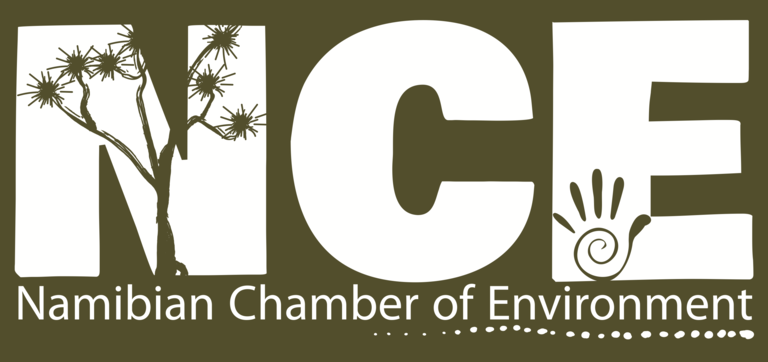
Why the Namibian moratorium on sardine fishing must continue
15th November 2021
After decades of overfishing combined with environmental changes, Namibia's sardine (pilchard) population finally collapsed. Falling by 99.5% from an estimated 11 million tonnes in the 1960s to a tiny 50,000 tonnes in 2015, this resource has been well and truly exhausted. Despite calls for a moratorium on sardine fishing by scientists since 1995, this was only implemented in 2018 for a period of three years. The Ministry of Fisheries and Marine Resources (MFMR) is now contemplating reopening sardine fishing, but have the stocks recovered sufficiently?
Sardines are small fish that feed on plankton and provide an important source of food for a large array of other fish, seabirds, marine mammals and humans. They are considered a high quality
fish in terms of the energy they contain per gram. Sardines thus provide most of the energy pathway between plankton and larger fishes (including many commercial species), birds and marine mammals. For humans, canned pilchards are much cheaper than most other protein options. These fish are also used widely to produce fishmeal for agricultural purposes, which was once a thriving industry in Namibia. It is therefore no surprise that when the sardine stocks collapse the entire marine ecosystem becomes less productive and people suffer as a result.
Given the dire economic straits Namibia finds itself in, it is understandably tempting to bring back the sardine fishing industry. Yet if the fish stocks have not yet recovered to the point where sustainable harvests are even possible, is this wise? At this point, even small harvests are likely to be unsustainable and possibly seal the fate of sardine fisheries once and for all. This would be the final deathblow for any kind of industry based on this resource and would further damage the critical marine ecosystem associated with the Benguela Current.
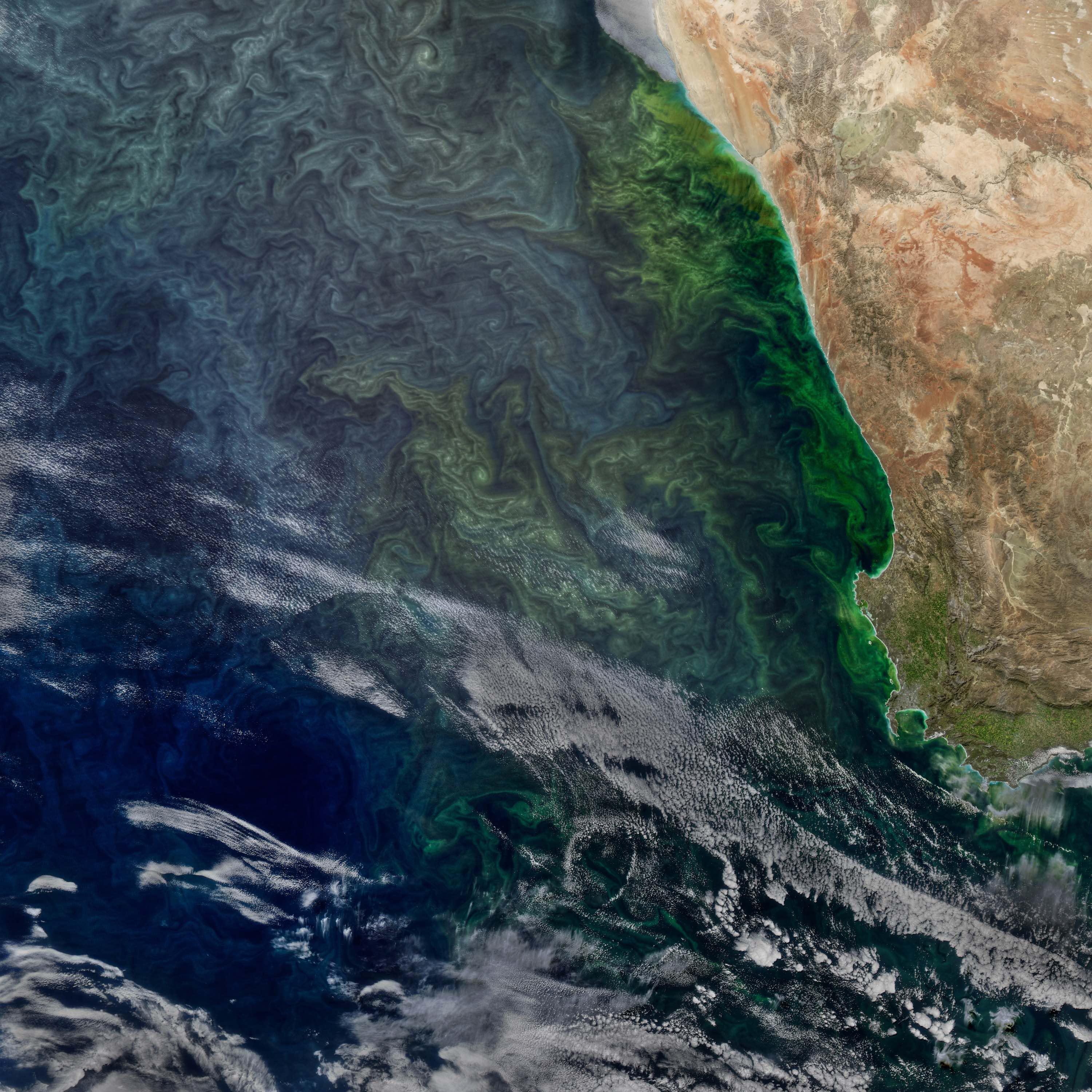
The Benguela Current flows from the west coast of South Africa past the whole Namibian coastline and on to the town of Benguela in Angola. This cold ocean current is nutrient rich and therefore capable of supporting massive fish stocks. If this system is well managed, it could provide a long-term economic boon to all three nations, although it is arguably most important for Namibia because it has fewer other resources than its neighbours.
Besides heavy fishing off the coast of Angola and Namibia in the 1950s to 70s, there were several large-scale ocean-warming events that affected the Benguela Current in 1972, 1984, and 1995. The last of these was preceded by a low oxygen event
off the continental shelf. Sardines rely on cold water and are intolerant of low oxygen levels, so 1995 was a particularly devastating year for these fish, resulting in urgent calls for a fishing moratorium at the time.
The collapse of the sardine fish stocks in this highly productive ecosystem is a stark example of the severe repercussions of unsustainable management combining with negative environmental conditions. By delaying the moratorium for many years after fisheries scientists sounded the alarm, the hole was dug ever deeper for this economic sector. Getting out of the hole will require a different mindset to the one that got us into it – rather than just focusing on short-term economic gains, Namibia needs a long-term ecosystem-based recovery plan.
Such a plan requires observing and learning from the ecosystem's response to the sardine collapse. As sardine stocks declined, jellyfish and bearded goby populations increased, with the latter species taking on a similar ecological role to sardines. However, gobies contain only about half the amount of energy per gram that sardines have, while jellyfish have even less energetic content and are not palatable to many predator species; neither of these is commercially valuable. In this state, the Benguela Current cannot sustain the same natural food webs and human industry as before the collapse, and the ecosystem damage could be irreversible if the sardine stocks are not restored as soon as possible.
While sardines are an important food source for a range of animals, three seabird species were particularly badly affected: the African penguin, Cape gannet and Cape cormorant. These three species are endemic to the Benguela Current, and all are now listed as Endangered by the International Union for the Conservation of Nature (IUCN) at the global level, while the Cape gannet is listed as Critically Endangered in Namibia. These seabirds all live and breed above the surface of the sea, so they were the most visible indication of the sardine population collapse. The rest of the food web that is directly and indirectly dependent on sardines is below the surface. Their demise goes unseen, unmonitored, and unreported. Yet that is where the largest impact will have occurred. The seabirds are indicators of trouble – the warning bell. But no-one was listening.
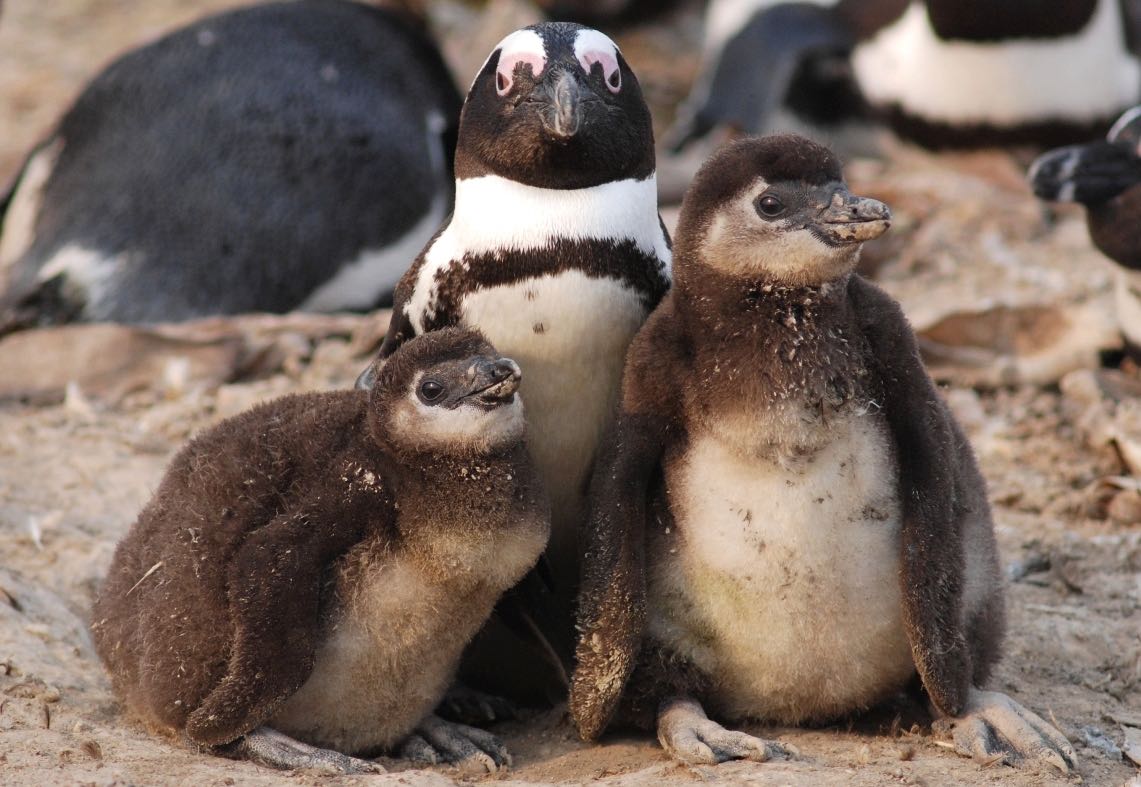
These birds are heavily reliant on this high quality fish and the similarly energy-packed anchovies, where these occur in sufficient numbers (anchovy stocks off the Namibian coast are insignificant). Penguins, gannets and cormorants breed in colonies on islands or suitable spots along the mainland, and while they are breeding they need to consume enough energy to meet their own and their chicks' energy requirements. Poor quality substitutes like gobies are not enough, which results in lower breeding success and higher adult mortality, as they are forced to work ever harder for the food they need to survive.
The drastic declines of these seabirds off Namibia's coastline should have been heeded as a warning of the collapsing sardine stocks. Breeding African penguins off Namibia's southern coast declined by 90% between the mid 1950s and early 2000s. Cape gannet populations plummeted by 95% during the 1970s. Cape cormorants declined by 62% around the same time, although some moved to the northern Namibian coastline where artificial platforms were set up to attract them to establish colonies (the guano produced was collected for use as fertilizer). In hindsight, we can understand the birds' clear message: the sardines are disappearing.
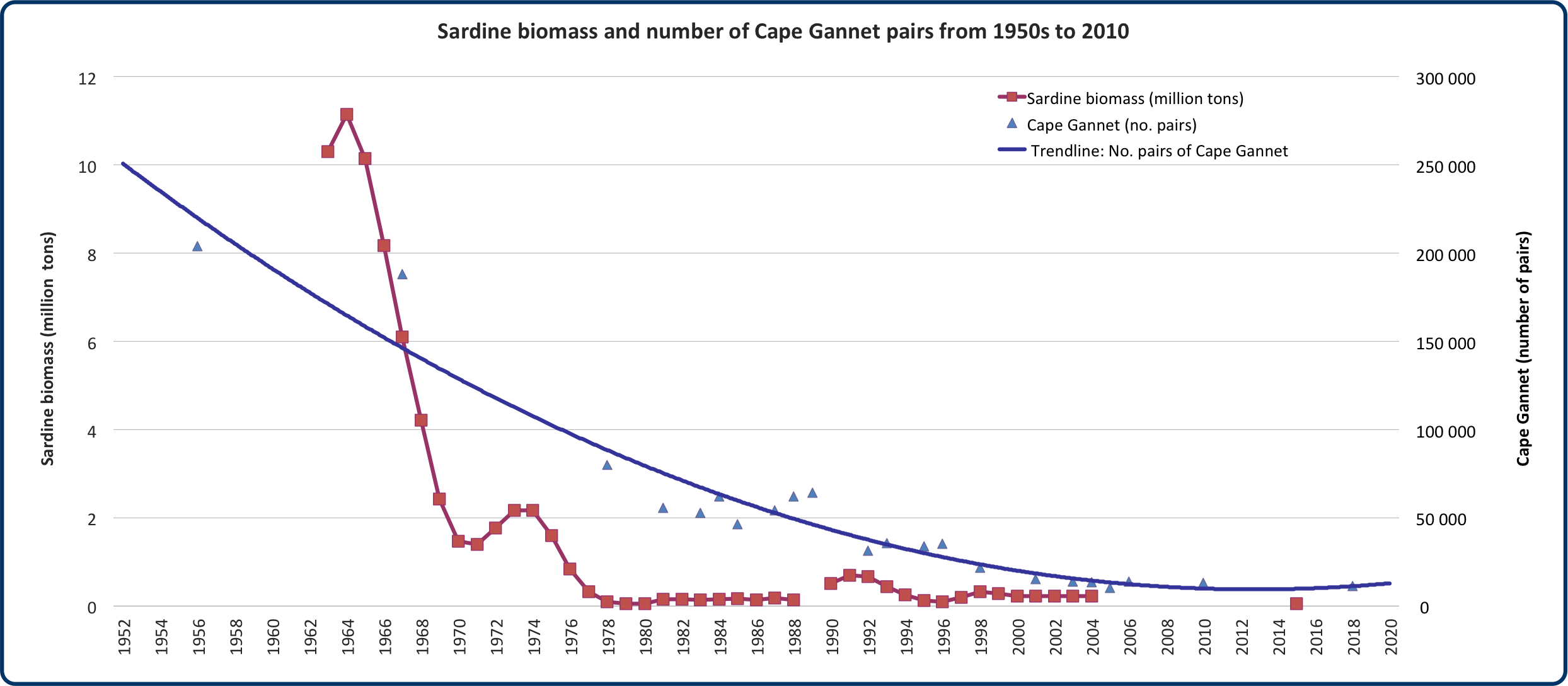
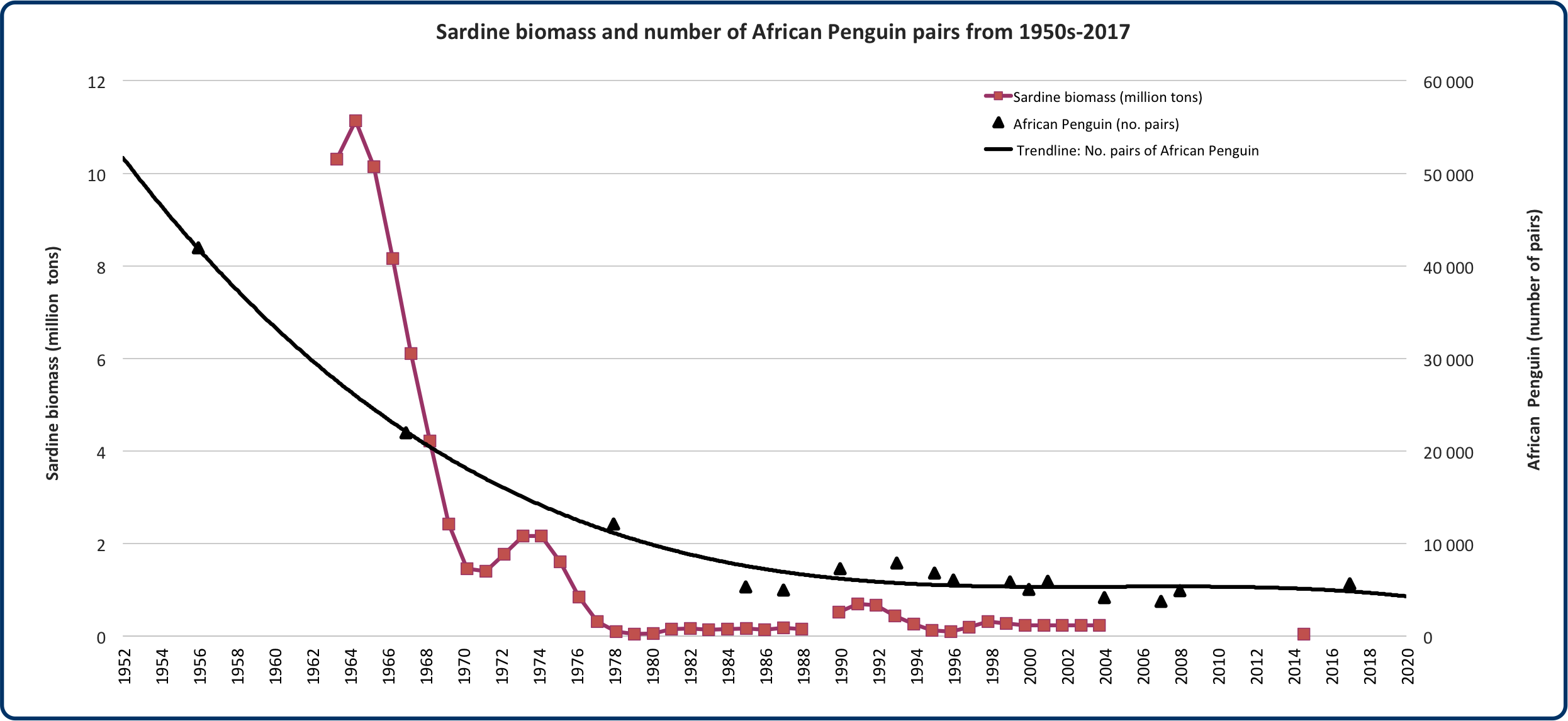
With that lesson ringing in our ears, it is clear that a sound monitoring system for sardines should include monitoring these key seabird species. When the sardines return in enough numbers to support not only the return of these seabirds, but also increased breeding success within their colonies, then Namibia can start considering reintroducing modest sardine fishing. Measuring the sardine stocks at the point when seabirds start to recover would give us a threshold of fish stocks above which fishing could be allowed. Even then, it is necessary to establish and maintain strict no-fishing zones around the key breeding islands and mainland colonies to give the birds a chance to feed their young by foraging nearby rather than having to travel long distances.
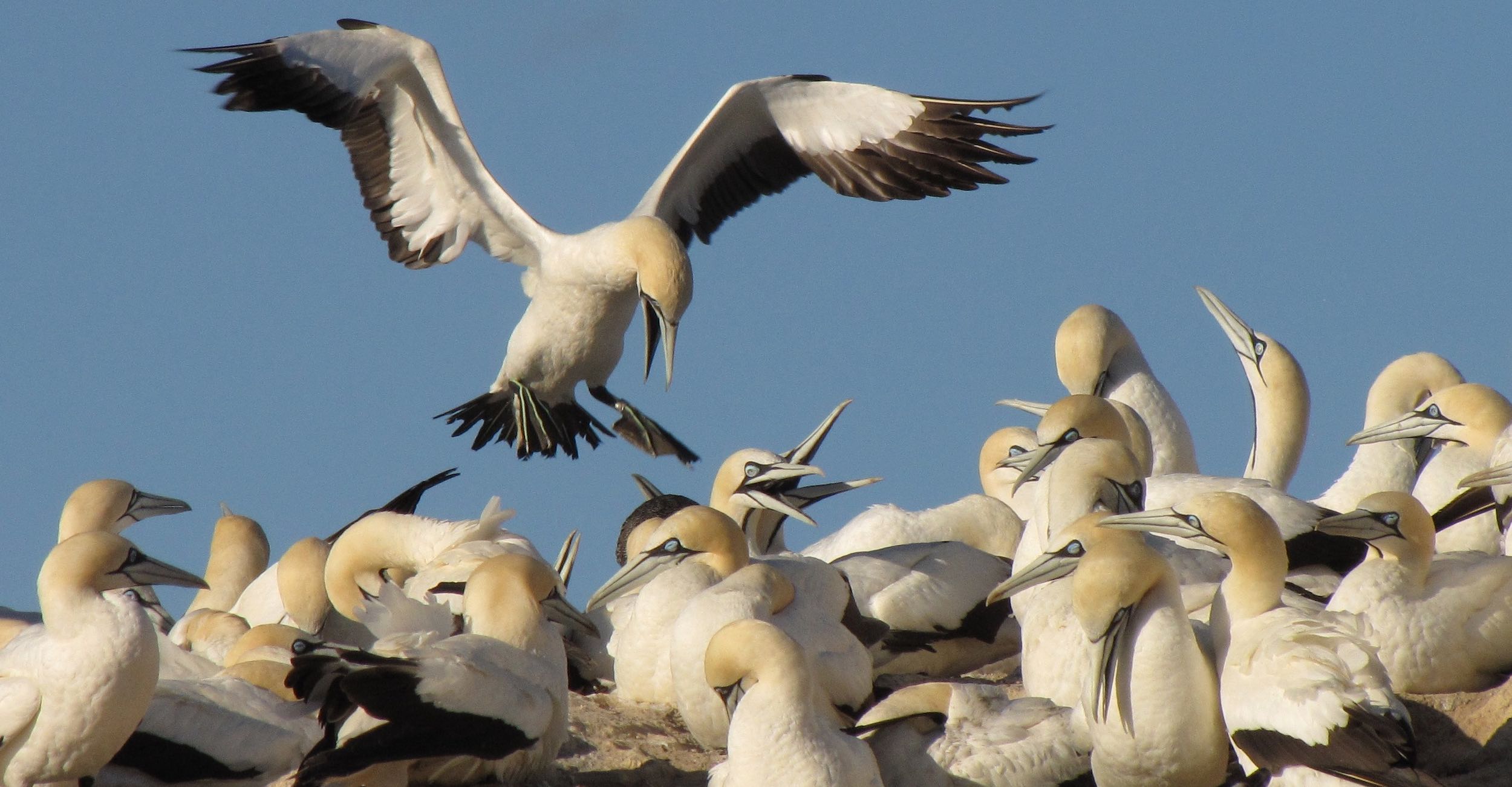
Monitoring seabird populations to supplement the MFMR's current efforts to directly monitor the fish stocks has several advantages. Sampling or detecting the fish directly using a research vessel is a costly procedure, which limits how often this can be done and the amount of ocean that can be covered. Seabirds, by contrast, actively sample
large parts of the ocean every day and produce easily measurable results – e.g. their population size and trends plus the breeding success within their colonies. Human observers can measure these and other variables easily and cheaply at appropriate times of year and compare them with the direct fish sampling results to build a detailed picture of Namibian sardine stocks over time.
As a signatory to the Benguela Current Convention with Angola and South Africa, Namibia is responsible for conserving its portion of this ecologically and economically important ecosystem. Furthermore, an additional agreement between Namibia and Angola is required to create a joint recovery plan for the sardine fisheries, as this fish stock is shared between these two countries. This plan should include penalties for other fishing operations that catch sardines accidentally (known as bycatch) to close any loopholes for exploiting this resource before it has recovered.
The conservation of marine biodiversity, including seabirds and their prey species, is enshrined in the Namibian Constitution as part of its commitment to the maintenance of ecosystems, essential ecological processes and biological diversity of Namibia
(Article 95). MFMR is recognised internationally as a proponent of the Ecosystem Approach to Fisheries Management – former Minister Abraham Iyambo co-chaired the committee drafting the Reykjavik Declaration on Responsible Fisheries in the Marine Ecosystem in 2001. In 2020, President Hage Geingob joined 13 other world leaders on a High Level Panel for Sustainable Ocean Economy that pledged to sustainably manage fisheries that fall within their respective jurisdictions by 2025. Namibia has further ratified the Convention on Biological Diversity, which includes commitments to marine biodiversity conservation. Namibia has thus committed itself to conserving the marine ecosystem at national, regional and international levels.
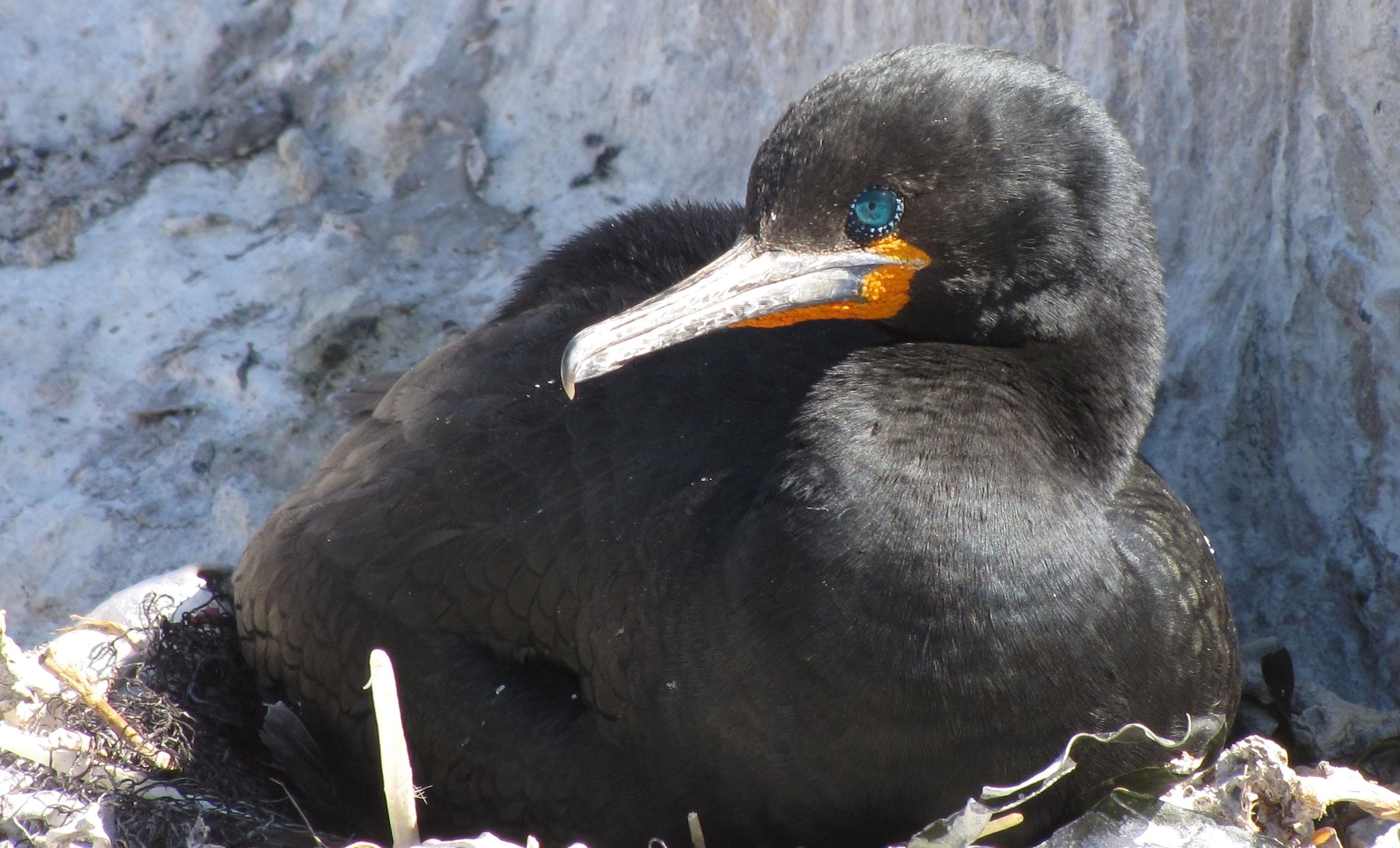
The MFMR therefore has a mandate to maintain the marine fisheries industry and conserve marine biodiversity in Namibian waters on behalf of the Namibian people – not only those who would benefit today, but for future generations who might find jobs in this sector. The sardine should be listed as Critically Endangered in Namibia and rigorously protected until such time as its population has shown significant signs of recovery.
The data speaks for itself. Our fish and seabird populations have crashed to a mere fraction of their former glory. If these were terrestrial species – mammals for example – the Namibian people and the global community would be in uproar. We need to apply the same standards of biodiversity protection and wise use of natural resources to the marine ecosystem as we do to the terrestrial. For these reasons, the Namibian Chamber of Environment is strongly recommending that the Minister of Fisheries and Marine Resources keep the sardine fishing moratorium in place, while implementing a sound scientific monitoring system to maintain a close watch on its status.
For articles on similar topics, please click one of the following options:
If you enjoyed this page, then you might also like:
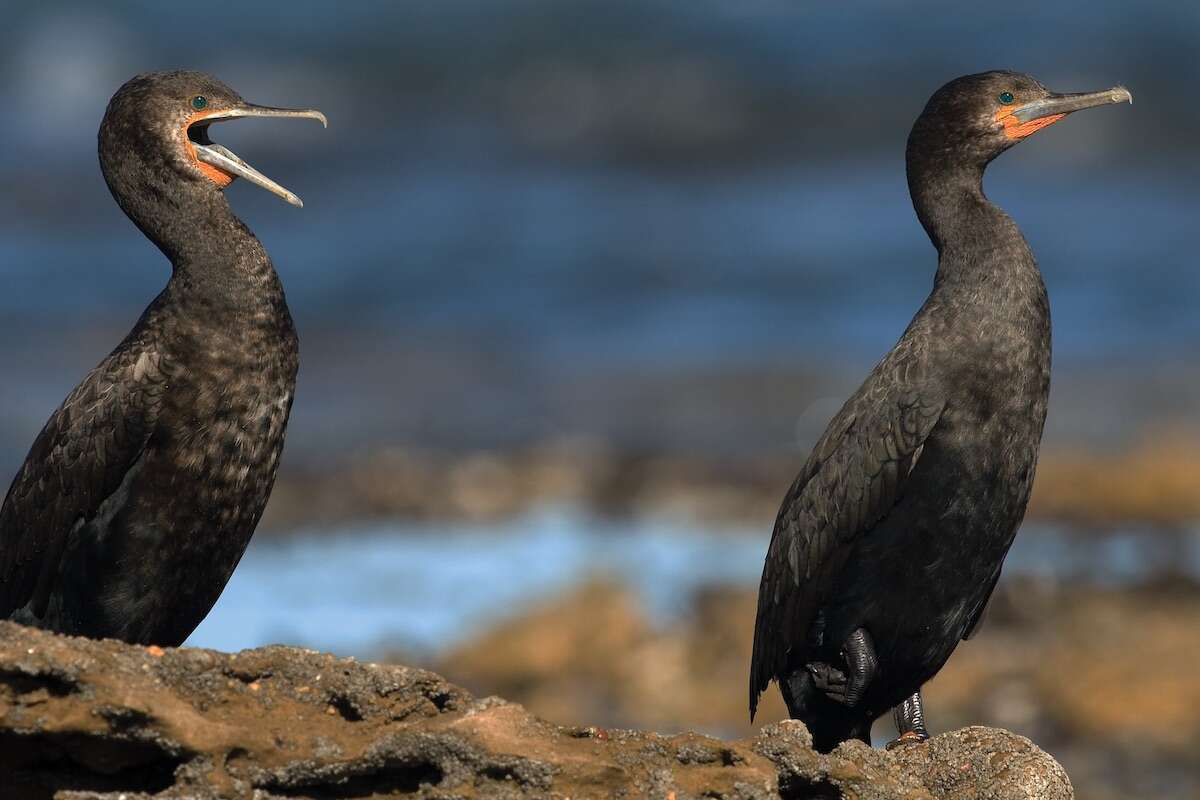
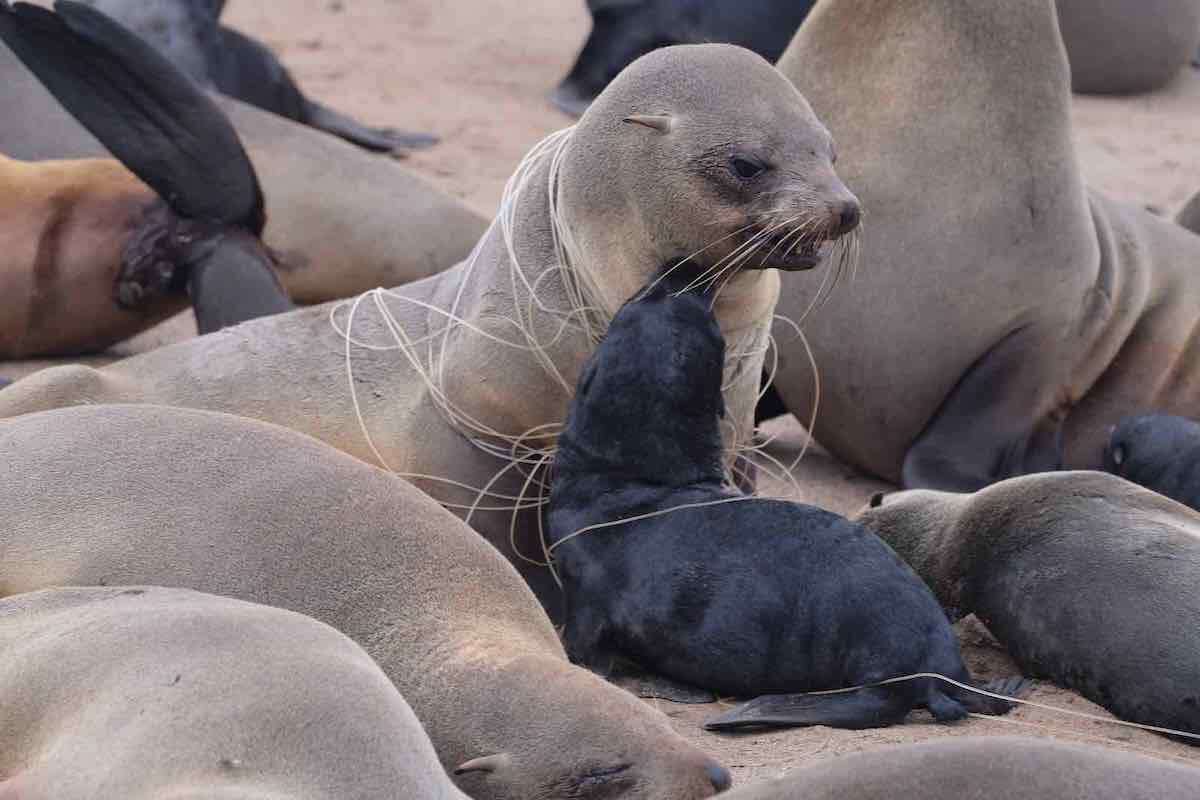
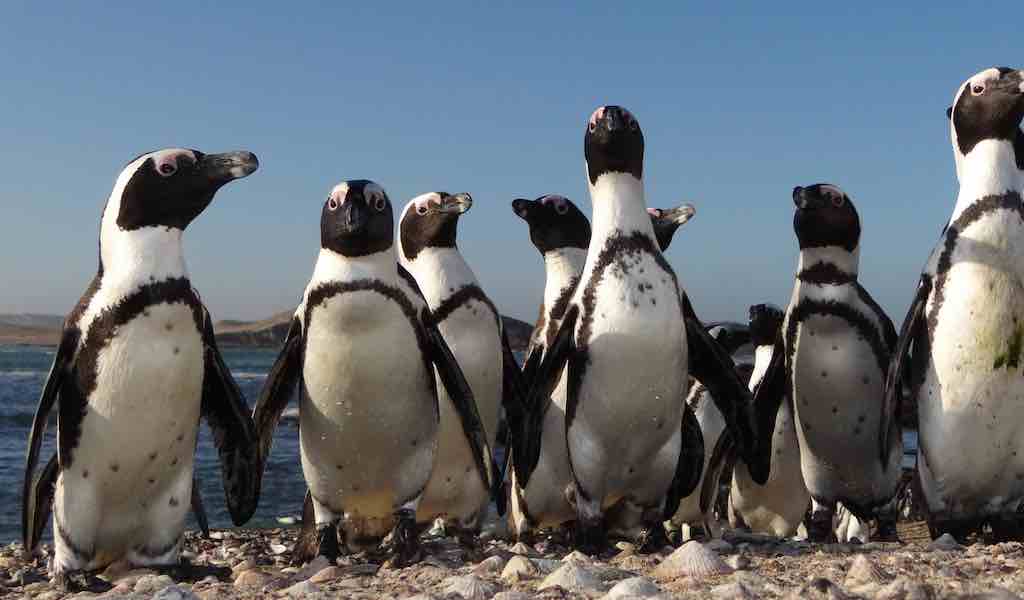

The Namibian Chamber of Environment (NCE) is an umbrella Association that provides a forum and mouthpiece for the broader environment sector, that can lobby with government and other parties, that can raise funds for its members and that can represent the sector.
www.n-c-e.orgThe Namibian Chamber of Environment (NCE) is an umbrella Association that provides a forum and mouthpiece for the broader environment sector, that can lobby with government and other parties, that can raise funds for its members and that can represent the sector.
www.n-c-e.org
We use cookies to monitor site usage and to help improve it. See our Privacy Policy for details. By continuing to use the site, you acknowledge acceptance of our policy.